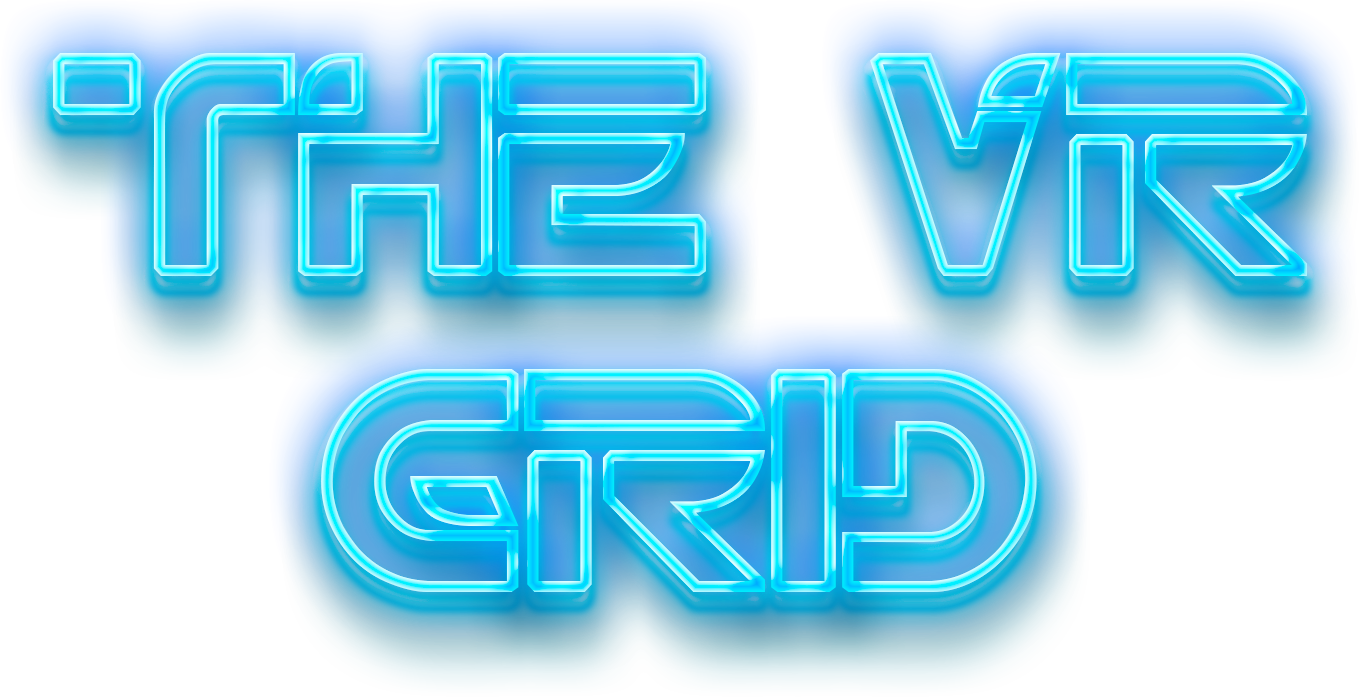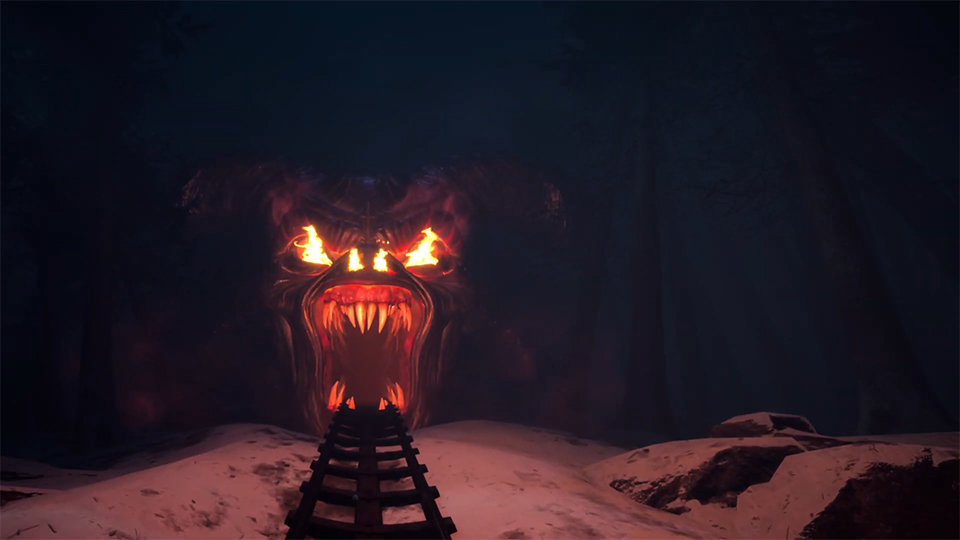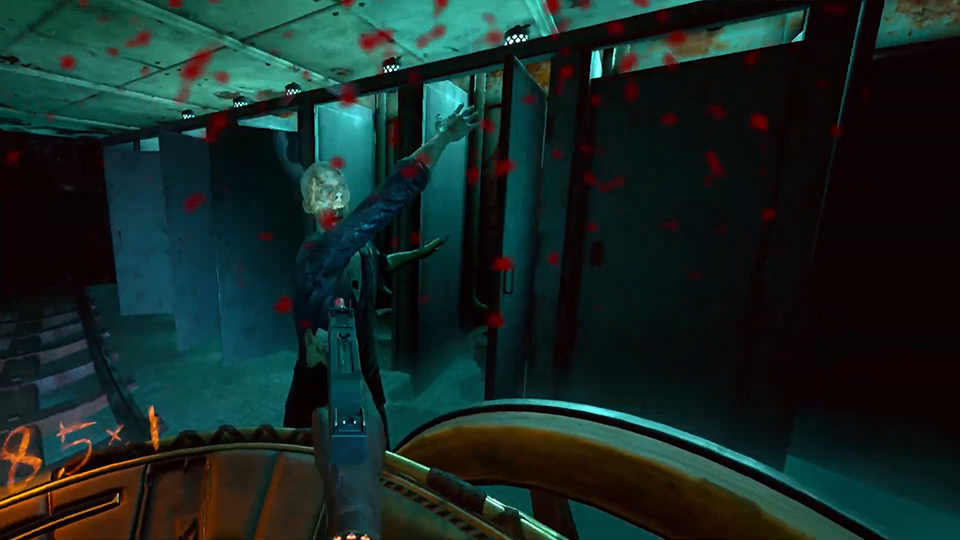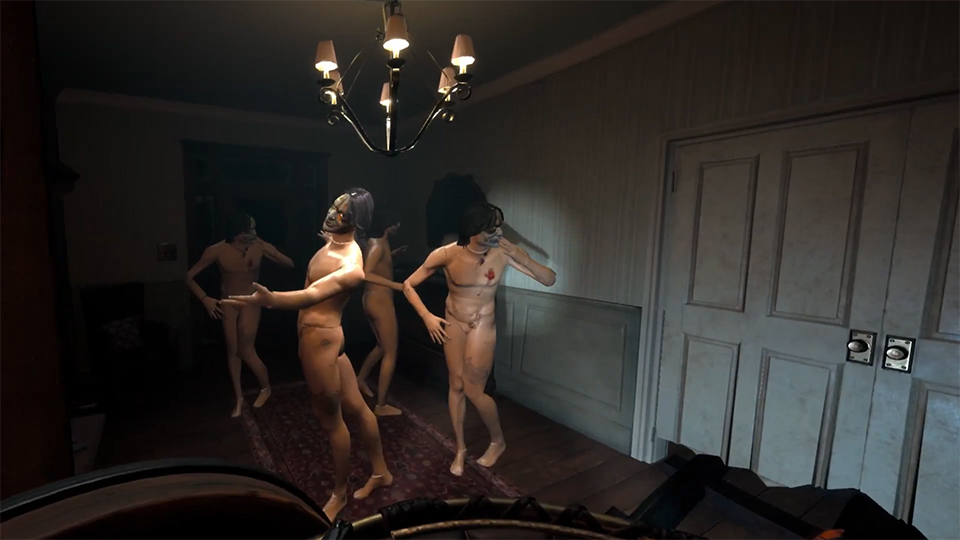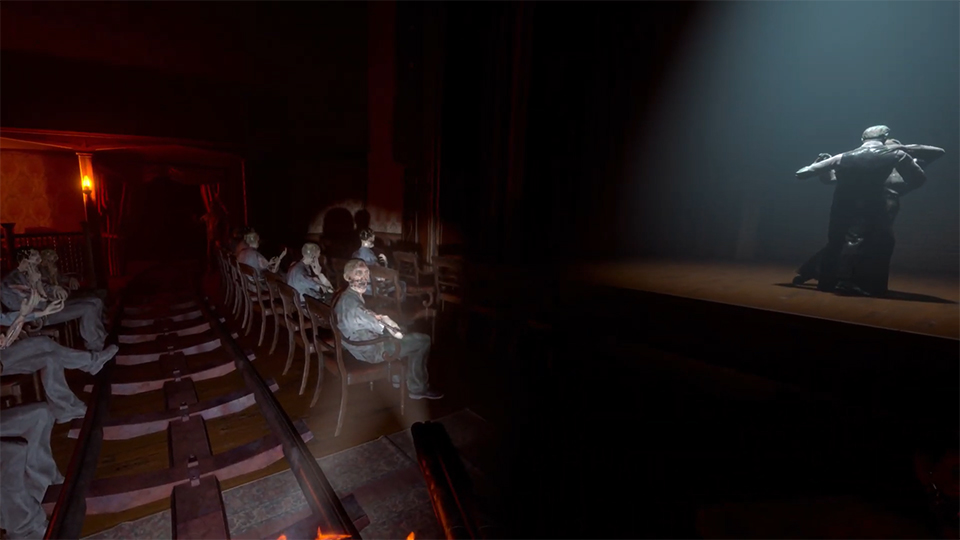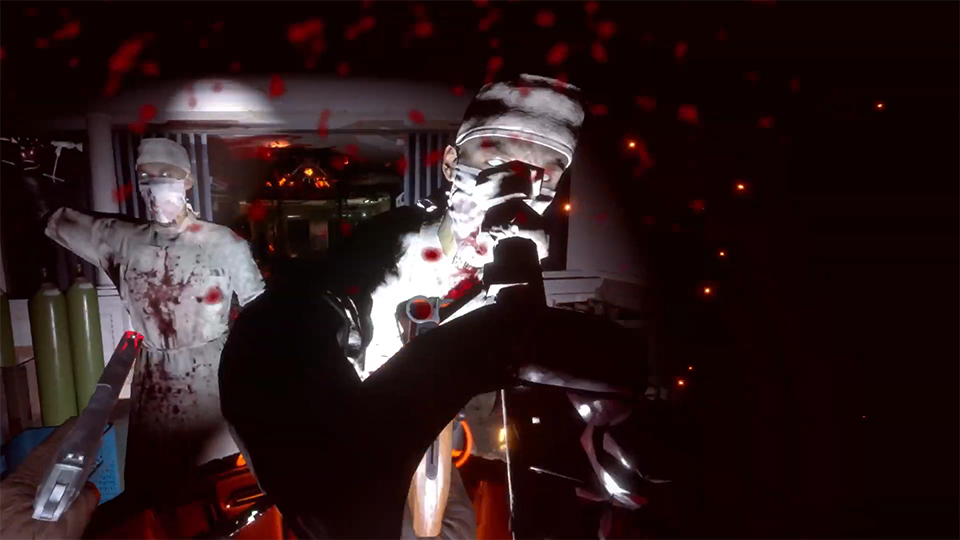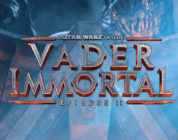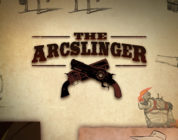Developer / Publisher – Supermassive Games
Price – US $39.99 / CAN $53.49 / EU €39.99 / UK £34.99
Release Date – March 16, 2023
Input – 2 x Tracked Motion Controllers
Play Area – Seated
Store – PlayStation
Reviewed on – PSVR 2
The Dark Pictures’ Switchback is a new VR game released exclusively on the Playstation VR2. For us PSVR veterans, we’ll forever know this as simply Rush of Blood 2. For those not familiar with the previous PSVR 1 entry, Until Dawn: Rush of Blood, Switchback is the spiritual successor to that title and is a combination rollercoaster ride/haunted house experience/arcade shooter rolled into one big VR Turducken/Haunted Coaster Shooter. Rush of Blood is still to this day one of my favorite VR titles to throw friends and family into. Does Switchback fill that void on the PSVR 2 or even improve on the first? The answer may surprise you.
I remember when Sony first showed footage of Until Dawn: Rush of Blood and thinking to myself, how lame it was that with all the potential of VR, one of the Sony exclusives would be a simple rail shooter with cheap jump scares. Yes, it was those things, but it was also a brilliantly balanced title that managed to be both a thrill ride and a competent arcade shooter with just enough horror sprinkled in to be creepy and fun without being too scary to the masses. Add into that AAA visuals and a high level of polish and Rush of Blood was easily my biggest surprise in the early days of the PSVR 1. Here we are with the follow up, Switchback, a title I was absolutely stoked about when it was announced.
So it pains me to tell you that, while not a bad game by any means, Switchback for me is a disappointment.
Let’s start things off with visuals. Right from the main menu screen, there were a lot of jagged edges, which is never a good sign. After jumping into the first level, I immediately tried recalibrating my IPD and eye tracking; I thought for sure that something must be amiss. But no, Switchback as a whole is just not a sharp title in the headset. This did not look like the PSVR 2 title I was expecting, as even the guns didn’t seem to be clear in the headset. Playing further and I was taken aback by the degree of low-quality textures and jagged edges throughout. Making matters worse, the game is at times rife with texture pop-in, which is especially noticeable when outside and looking at the forested areas. These issues, combined with a general lack of polish to the whole game, has me wondering if this had been originally being designed for the PSVR 1 and was shelved…only to be rushed to completion for a PSVR 2 release. That at least would explain the visuals on hand.
This feeling of the game being rushed out the door is further reinforced by the often uneven quality of the level design that is at both times helped and hurt by Swithcback’s levels being based around previous entries in the Dark Pictures Anthology of choose-your-own-adventure styled cinematic games. This helps Switchback as it does offer up a variety of settings beyond that of Rush of Blood. However, even with this offer of variety, it is at the same time hindered by the fact that some of these previous cinematic titles in the franchise just don’t seem to lend themselves to the gameplay of Rush of Blood (aesthetically or thematically). I couldn’t help shake the feeling that some enemies, stages or parts of stages were patched together, shoehorned in to work, or simply phoned-in by the developers. This point is further reinforced by some stages seeming to pad their length by reusing areas and assets. When the game does nail an area (and it does indeed at times), it can be a fantastic display of horror thrill ride design. It’s just unfortunate that this isn’t the norm.
Lighting effects here are top notch though and feature some great use of dynamic flashlights as they cast real time shadows off the environment, creating some truly creepy shadow work. Further to this, the game plays much more with lighting than the previous title, using it to great effect to keep things exciting and unpredictable. Your light sources are often taken away from you, drenching you in a darkness that is really driven home by the true blacks of the PSVR 2 OLED display, and also blinding when lighting up the darkness with the explosion of your muzzle flashes. Additionally, Switchback does much more with particle effects, really leveraging things such as fog to create a sense of atmosphere simply not possible back on the first PSVR.
So, visuals are not all bad, with this game still better looking than the vast majority of VR titles these days, but the bar set by the first title was pretty high. I could forgive some of the bland level design but ultimately the lower resolution of the graphics and sheer lack of polish in some visual areas just makes me want to wait for a patch to make this actually look like a PSVR 2 game. For those wondering about mura and reprojection issues: mura is present, though not aggressively so; reprojection is certainly noticeable especially when looking to the side and looking for it. It was never too distracting for me, but it was present.
Getting into gameplay now, this sense that Switchback was being developed for the PS4 hardware is further driven home by the games’ irritatingly long load times upon death. This is something we really shouldn’t be seeing on a console with a solid state hard drive. When loading into the beginning of the game, I was expecting something similar to the epic opening of the first as you rolled into the opening credits, blood pouring down onto your face as you come face to face with the very charismatic ring leader host character welcoming you to the upcoming ride. Well, that didn’t happen here. Instead I was greeted with a rather dull opening scene, riding on a passenger train, then loaded up right into the starting roller coaster car for a very barebones and rather boring tutorial. There was no AAA vibe, no excitement, and before I knew it I was starting the first stage. Looking back, this should have been a warning sign that Supermassive Games just didn’t seem to be treating this entry as the passion project that the first felt to be.
First things first, yes this is very much the follow up to Rush of Blood. You are in a roller coaster car, cruising through haunted house type areas, all while shooting enemies bent on killing you. The ingredients are all here, however, while it’s hard for me to put my finger on it, the recipe just isn’t as perfected as the first title. To understand why, let’s break things down a bit. First looking at the rollercoaster portion of the game, much remains the same here as the game alternates between slow and fast sections. I would say as a whole the rollercoaster portion is more subdued than in the first which, frankly, was exactly the opposite of what I wanted. I was hoping for a sequel that might dare to be a little more extreme in sections for those of us with the built-up VR legs that seven years playing can do. Instead, we see a lot of slower sections moving through portions of uneventful track. Maybe this was done to give players some time to relax between shootouts, but to me it often felt like padding to extend the track runs. Further to this, absent are some of the more extreme drops and track jumping sections from the first. Instead, Switchback trades these up for sections where the car comes to a full stop. Perhaps this is in an effort to build suspense and push the horror side of things, but it does this at the expense of keeping things moving and exciting. The game does still have its fast sections, requiring you to bob and weave to avoid overhead obstacles, but it is used here to lesser effect than the first.
Regarding the haunted house and horror side of the game, horror games don’t really scare me. As such, it’s hard for me to gauge the scare factor here. Supermassive games is obviously trying to make Switchback a scarier experience than Rush of Blood, with more of focus on jump scares and enemies that like to get right up in your face, or even directly on top of you. Playing much more with lighting and fog effects and taking your guns away from you (which means you also lose your flashlights), leaves you feeling vulnerable in a way the first game rarely did. Add to this the game’s first-rate sound design that plays with horror music stylings and 3D audio of monsters creeping, running, crackling and slurping away in the darkness or around each corner. Unfortunately, Switchback all too often felt like it was doing a paint by numbers homage to what was done in Rush of Blood, ticking all the boxes but rarely being able to bring it together for true creepiness like the first game did. The game does have its moments though, like the Westworld-ish hotel of animatronic dummies, and the soon-to-be-famous blinking sections of the game, where enemies only move when you blink (think the Weeping Angels from Doctor Who). When the game nails these parts, it is masterclass VR game creation. The padding and long, slow and uneventful stretches with nothing happening does these masterclass sections a disservice.
Unless you have played all of the Dark Pictures Anthology games (I’ve only played one to completion – Until Dawn) and can pick out something I’ve missed, Switchback doesn’t seem to have a real story itself. From what I can tell, your goal is to save the nameless people sitting in the train car in the game’s opening moments; beyond this there really is no connective narrative between sections of the game. Offering up a total of 11 tracks (opening intro level excluded), each Anthology game gets two connected levels each. Building on the ability to change track directions we saw in Rush of Blood, Switchback takes its namesake more seriously here offering many more choices to switch tracks, and consequently adding a lot more potential replay value to the game over Rush of Blood. Tracks take about 20 minutes to complete and each track has its own scoreboard. At the completion of the second level and the mini boss, players are given an overview of choices made at each track junction, reviewing what they did or didn’t do. In an effort to be much more inline with the hallmarks of the Anthology series, Switchback attempts to give you a sense of your choices actually mattering. It doesn’t really work here, but for those who care, the point seems to be to make the right choices in order to save a character from that specific Anthology series.
One thing Switchback does differently over Rush of Blood is to introduce new (albeit not game changing) ideas as you play through its levels. Some stages might require you to use an infrared light to highlight hit points that allow you to open blocked tracks and escape a pursuing enemy, while other parts give you a flare gun in order to burn blocked areas or solve some basic symbol puzzles. These ideas do help to freshen up the game’s gunplay, but I used them too infrequently to have much of an impact. Gunplay here remains much the same as Rush of Blood, with your primary loadout consisting of 2 revolvers each reloaded by shaking your hands, with the option to turn on auto reload in the settings. Many players may want to turn this on, as the reload mechanic is a bit hit or miss. The manual reload function seems to have made it a bit less sensitive than the last, likely to reduce unwanted reloads.
Similar to Rush of Blood, gun upgrades can be picked up throughout the levels by shooting boxes, offering up a limited ammo upgrade in the form of other types of handed weapons. Weapons upgrades are used less often in Switchback than Rush of Blood, and simply don’t seem to be as rewarding to use. Supermassive missed a huge opportunity to have built into the sequel some sort of weapon and ability upgrade tree, one that could be developed through completion of the game and further playthroughs to open up new weapons and sections of the game. As it is, the gunplay is pretty much the same here as in Rush of Blood, though with a significant drop in the creativity of enemy placement, combat style and really any combat situations like the first had. Playing the first I distinctly remember trying to take on the chainsaw enemies, or snipe out hidden enemies by shooting out exploding barrels. None of that is here in Switchback, and is instead replaced by a repetitive use of enemies jumping in your face or simply coming at you in waves from your left and right. Ultimately like other parts of the game it all feels very paint by numbers, like the team just wanted it out the door, rather than something truly special like the first game. Further to this, the carnival shooting gallery feeling that Rush of Blood built into even the slower sections of Rush of Blood is very poorly implemented here and feels like a complete afterthought. What there is sadly comes off more like make-work to keep players busy than actually a meaningful part of the game.
On a positive note, a new aspect in Switchback that is straight up awesome is the implementation of haptics in both the dual sense motion controllers and the headset. Hit your head on a 2×4 and you will know it. Haptic trigger effects give some weight to the guns while the HD rumble is expertly used here for everything from popping off shots, to the simple sensation of rolling the gun around in your hand, to the clanking of the roller coaster car up a steep incline. It’s awesome stuff and something all developers need to put the time into. Tracking on the controllers isn’t without its flaws at launch though. I did run into a few occasions where the controller would temporarily lose tracking and then suddenly pop into view. It wasn’t something I could replicate on purpose, so it’s more likely a glitch that can be patched.
Now to final thoughts and the review score. Rush of Blood was a PSVR 1 classic and I had high expectations for the follow up in Switchback. Unfortunately, Switchback all too often feels like a movie sequel made by a studio without the same writer and director. It might have the same actors and sets, but it lacks the soul, craftsmanship and magic of the first iteration. Switchback isn’t without its great moments and I still had fun – a combination roller coaster/haunted house/arcade shooter is hard not to like. Switchback simply isn’t as fun as Rush of Blood overall. It lacks Rush of Blood’s polish and passion, and suffers greatly on the visual side of things. Hopefully a future patch can improve the game’s resolution and bring it into line with the expectations of VR graphics in 2023, but ultimately the gameplay here too often feels like a chore rather than a thrill.
Unless you’re just dying for this title, it isn’t worth the day one price. I would wait for sale or at the least a big visual patch.
Skydance Interactive provided The VR Grid with a press code for this title and, regardless of this review, we thank them for that!
